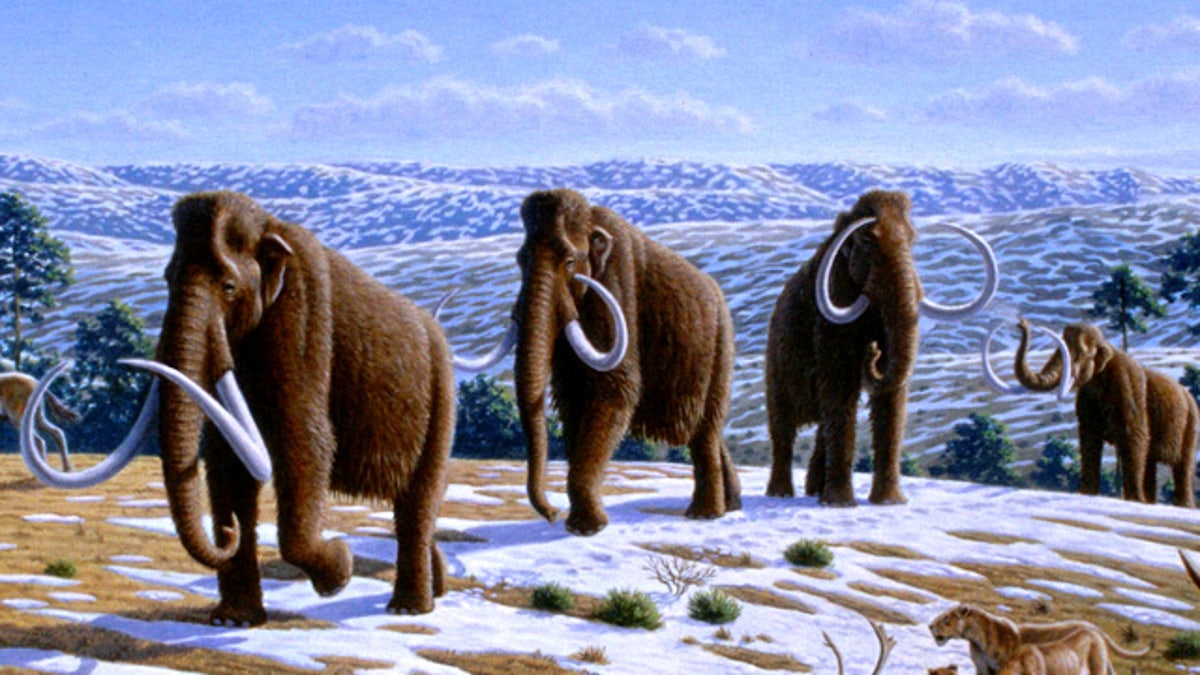
An artist's illustration depicts a herd of woolly mammoths. (Mauricio Anton/PLoS)
Giant woolly mammoths died out because they ran out of grass -- not because they were hunted to extinction, according to scientists.
Until now, it was thought the huge relatives of modern elephants had been harried and hunted into oblivion by early man. Instead, global warming 21,000 years ago left the massive mammals with nothing to eat, a team of scientists from Durham University claimed.
As the planet heated up and the weather got wetter, forests spread out, leaving large herbivores like mammoths with less to eat and causing knock-on effects for the rest of the food chain, the scientists found.
The findings come from a new investigation into the mammoths' last days, led by Durham University's School of Biological and Biomedical Sciences.
Together with colleagues from the Natural History Museum, Bristol University and Lund University in Sweden, the scientists simulated the effect of global warming on climate and vegetation at the end of the last ice age.
Standing nearly 10 feet tall, mammoths had thick hair to cope with the cold. But nothing could help them with a lack of food, the new research suggested, coming to the conclusion it was the growth of trees that was their undoing.
"It is food for thought in these times of global warming and human-induced habitat change," said team leader Brian Huntley.
"Mammoths had roamed and munched their way across many parts of Europe," Huntley said. "We believe that the loss of food supplies from productive grasslands was the major contributing factor to the extinction of these mega-mammals."
The team warned that the plight of mammoths after the ice age could happen again -- this time to elephants and rhinoceroses, if habitats change because of modern global warming.
"This is a model for what may happen as a result of rapid climate change over the next century linked to human activity," the professor added.
